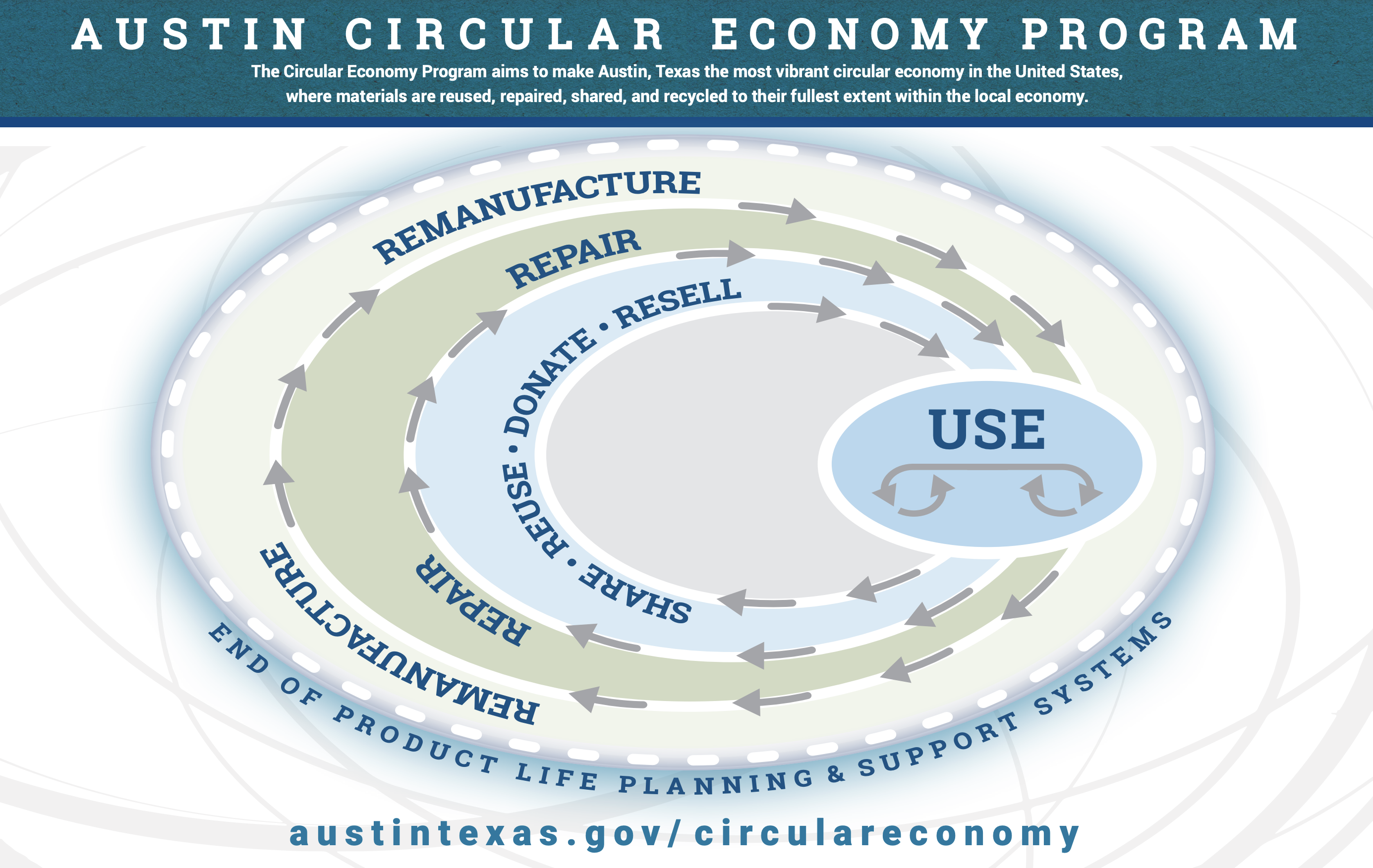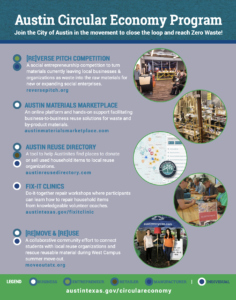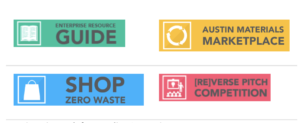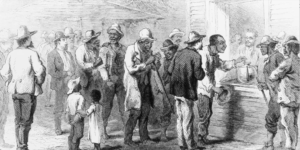
If you’ve heard the term ‘circular economy,’ chances are you’ve heard it in connection with a recycling or reuse business. But that’s not the whole story. The goal of a circular economy is to design out waste and pollution, keep products and materials in use, and regenerate natural systems. (For more information on what a circular economy is, check out this quick primer, or this podcast.)
While businesses in the recycling and reuse industry are critical to a circular economy, a complete transition from a take-make-dispose society to a restorative, regenerative one involves businesses from all industries — and yours just might be one.
Here are the top 5 signs your business might be a part of Austin’s circular economy (without even knowing it!):
- You use a recycled or reused material. If you use recycled plastic, metal, or other salvaged materials to create your products, you are avoiding the need for new, raw materials. This makes your business circular and keeps valuable materials in the economic ecosystem.
2. You design products to use less. If you have a goal and set out to design products using less raw materials, or produce less waste in the manufacturing process – perhaps you’ve designed your product packaging to offer reusable options – you are reducing the demand for natural resources and acting in ‘circular’ way.

3. You use sustainable materials. Some materials used in production are made of toxic chemicals (such as PVC), which oftentimes end up in landfills or are incinerated, leading to negative environmental impacts. If you use sustainable alternatives to these toxic materials, such as bio-based materials, then you are enabling end-of-life solutions that reduce or remove negative environmental impacts, since many products made of sustainable materials are able to be recycled, reused, or composted
4. You make products built to last, or offer services that help them last. If your business offers extended warranties, creates durable products, or works to create an emotional connection between consumer and product (think, heirlooms— products passed down through generations), then you are practicing circular principles. Physical and emotional durability are some of the best circular design strategies that businesses can implement, as they keep these items in use and out of the landfill. Additionally, offering repair services or providing easily accessible repair information to your customers ensures that your product stays in use and is held onto for as long as possible, keeping it in Austin’s circular economy.
5. You offer a rental service or provide a service in place of a product. If you offer rental options that keep consumers from making one-time purchases, then you are practicing a circular principle that keeps items and resources in the economy. On a similar circular path, if your company replaces a product with a service, then fewer items are being produced which reduces emissions and waste from our system.
 If one or all of these practices applies to you and your business, then you are leading the way towards Austin’s sustainable, circular future. Austin says thank you!
If one or all of these practices applies to you and your business, then you are leading the way towards Austin’s sustainable, circular future. Austin says thank you!
To see how you can be a part of Austin’s circular economy future, join Austin’s Circular Economy Program by applying to be a part of Austin’s Circular Economy Story or by signing up for the Circular Economy Program newsletter to receive updates on local news, upcoming networking opportunities, and business resources.
Connect with us and join Austin’s circular story today!






